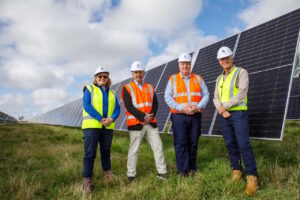West Australia’s main electricity grid has suspended its newly created ancillary services market because of unexpectedly high prices, and will not re-open it until the cavalry arrives later this year in the form of four new big battery projects.
The W.A. energy market has been redesigned and re-modelled in the past year as it prepares for the transition from a centralised, fossil fuel dominated grid to one based around renewables and storage.
That means a switch from large synchronous generators to smaller, distributed inverter-based technologies, and new rules and market designs to make it fit for purpose.
Not everything has been going to plan. The failure to produce even a new market dashboard has frustrated energy market participants, and those who like to watch, and the rejection of a budget increase for the Australian Energy Market Operator last week has raised questions about when this might be rectified.
But a bigger “teething issue” has emerged in the creation of a new ancillary services market, called the essential services market in W.A. because it will provide the essential system services such as frequency control.
Since the new market was launched last October, prices have been unexpectedly high and are starting to have an impact on power bills, particularly for large businesses.
So, in what has been described as an “extraordinary intervention”, the state energy minister has effectively suspended the market by introducing a clearing price cap of $500/MWh that came into effect last week, and will remain in place until late November.
“The Essential System Service costs in the Wholesale Electricity Market (WEM) have increased significantly since the start of the new WEM on 1 October 2023,” a government statement said.
“This interim solution is required to mitigate these significant cost increases in the short-term while an investigation into the underlying causes of the cost increases progresses.”
Essentially, what is happening here is that there is not enough competition to create low prices. The legacy fossil fuel generators have not made much of their capacity available for this new market, so scarcity pricing has dominated the market.
That is expected to change from October, when the first of four new big batteries are expected to join the grid, and create a lot of new competition for the new essential services market.
Currently, the state only has one operating big battery in its main grid, the 100 MW, two hour (200 MWh) Kwinana battery owned and operated by the state-owned Synergy.
But, unlike the independently owned Hornsdale big battery in South Australia, which was able to quickly smash the gas cartel’s control over the frequency services market after it came into service in 2017, it has not had the same impact.
In the main National Electricity Market in the eastern states, battery storage – because it is faster and more flexible – has now taken a dominant position in the frequency and fast frequency services market, and over time is expected to do the same in the inertia and even system services markets, once developed.
The same is expected in W.A. The four batteries expected to join the grid in October are the second stage Kwinana battery (200 MW, 800 MWh), the first stage of Neoen’s Collie battery (217 MW, 867 MWh), the 100 MW, 200 MWh Wagerup battery owned by Alinta, and the 55 MW/220 MWh Cunderdin battery, being built next to a solar farm.
All these batteries have won specific contracts from AEMO to time shift the output of rooftop solar from the middle of the day to the evening peak, to help smooth the exist of some of the state’s remaining coal fired generators, but all will have the capacity to also play in the ancillary services market.
The introduction of the price ceiling will also give authorities time to review the algebraic calculations being used by AEMO for the ancillary services market and how it is being used.
As one energy analyst noted, the Economic Regulation Authority had expressed concerns with how it was being forced to apply the algebraic formula. Market authorities hope that the ceiling will give the ERA time to “unpack that issue”, as one well placed energy source described it to Renew Economy.
W.A. is certainly rapidly expanding its battery storage facilities. Apart from the four new projects cited above, Neoen has also started work on the second stage of its Collie battery, that will add 341 MW and 1363 MWh of storage capacity after winning another solar shift tender, while Synergy is building its own 500 MW, 2000 MWh in Collie.
More battery projects that have bid into the solar shift tender will be announced shortly, while the first auction for storage under the federal government’s Capacity Investment Scheme will seek another 500 MW of battery capacity with an average four hours of storage.










